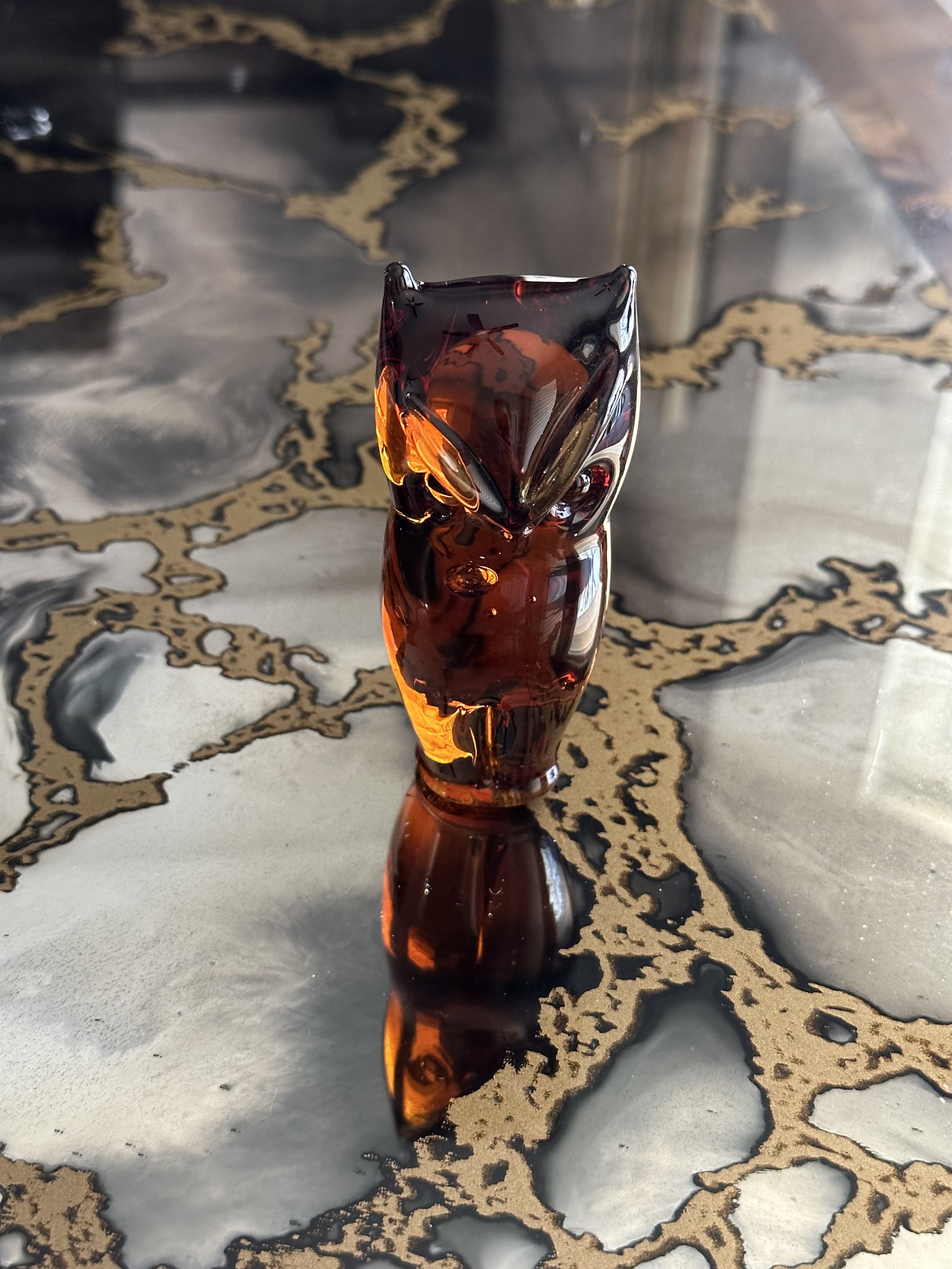Owls
Dallas
Today was a mini-adventure day. We were running other errands and found an estate sale on the way. The neighborhood was right up our alley. Designs, color it checked a lot of boxes. The house itself was fun and had some interesting architectural elements.
The homeowner worked for Avon for 50 years and apparently crushed it. She had several shelves of trophies demonstrating her skill, ability and longevity.
There were a lot of knick-knacks and a good supply of owls. One spoke to us - a simple, glass, stylized own.
The Owl
The 1970s was without question “The Decade of the Owl.” The decade started by riding in on the wings of the 1960s environmental movement including its anti-pollution goals. The owl soared into the '70s as a symbol of nature, wisdom, and honesty. Soon the owl began to pop up as a design element on kitschy home décor alongside the ubiquitous mushroom motif. Lamps, figurines, planters, wall hangings, piggy banks, mugs, kitchen canisters – owls were everywhere.
- The History of Owl Decor Trends (Vintage Virtue)
Soon after, our long affair with all things industrial ended. In the 1970s, nature became a bucolic escape from the manmade world where you could get back to your authentic self. We brought the outdoors inside with handmade, natural, and rustic materials. And with depictions of owls.
Owls were the original put-a-bird-on-it trend, emerging in the 1970s when we got crunchy, crafty, and back to nature. We showcased the wide-eyed bird on lamps, planters, walls, rugs, pillows, and salt-and-pepper shakers, to start. "There were owls on absolutely everything," says Dr. Anna Ruth Gatlin, an assistant professor at Auburn University who teaches the history of interior design.
The owl trend flew in on the wings of the environmental movement, born shortly after Ohio's oil-slicked Cuyahoga River caught fire in 1969. The first Earth Day was held less than a year later, putting the country on track to create the Environmental Protection Agency and many major pieces of legislation protecting water, air, and animals in the 1970s. Around this time, Mr. Owl, the beloved Tootsie Pop mascot, reached televisions across America, securing the big-eyed bird as a household figure.
"There was a longing for nature, which is why owls were such a popular motif," Dr. Gatlin says. "You saw mushrooms pop up as a common decorating motif, too, along with owls, so it was about romanticizing the wild nature of the forest." Other interior trends that took their cues from nature included wood-paneled walls and color palettes of golds, greens, and browns.
Owls also represent spirituality and wisdom. "There was a sense we could learn something from nature and animals if we just listened," says Dr. Gatlin.
- Learn How Owls Became a '70s Decorating Staple (Better Homes & Gardens)





